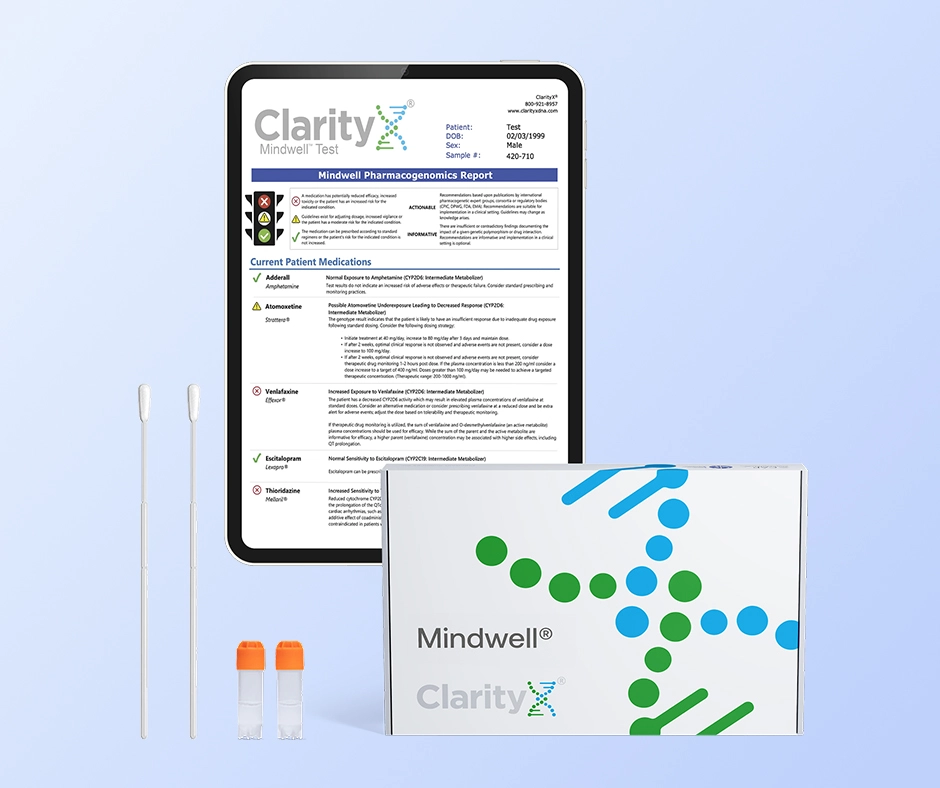Key Highlights
- Keppra® is a medicine that helps treat some types of seizures in both adults and kids.
- It helps reduce the over-excitability of neurons associated with seizures.
- Keppra usually starts to work within a couple of weeks, but how fast it works can differ from person to person.
- Things like dosage, individual metabolism, and seizure severity may affect the time it takes for Keppra to work fully.
- It's important to communicate and follow up with your healthcare providers regularly.
Introduction
Managing epilepsy can be challenging, but various treatment options exist to help manage seizures and enhance your quality of life. Seizures occur due to abnormal electrical activity in the brain. If you or someone you care about has been prescribed Keppra (levetiracetam) granules for epilepsy treatment, it can be helpful to better understand how this medication works and how long it may take to show effectiveness.
Understanding Keppra and Its Uses
Keppra®, or levetiracetam, is a medication used to help control seizures in individuals with epilepsy. It belongs to a category of medications known as anticonvulsants or antiepileptic drugs (AEDs). Although the exact mechanism of how Keppra works is not completely understood, studies indicate that it may interact with certain brain proteins (i.e., SV2A) to diminish the abnormal electrical activity that triggers seizures.
The Role of Keppra in Treating Seizures
Keppra plays a crucial role in reducing seizure activity. It operates within the central nervous system to address the underlying causes of seizures. Doctors prescribe Keppra to manage various types of seizures, including partial seizures, also known as focal seizures, myoclonic seizures, and generalized tonic-clonic seizures, which affect both sides of the brain.
However, it's crucial to understand that Keppra is not a cure for epilepsy. It is an effective treatment that helps control seizures and enhances the well-being of many people. When taken appropriately and with the assistance of a healthcare professional, Keppra can decrease the frequency and severity of seizures.
Key Benefits of Using Keppra for Epilepsy Management
An important benefit offered by Keppra is its relatively predictable response. Many seizure medications have narrow therapeutic windows, meaning they must be carefully adjusted and monitored to ensure levels are high enough to be effective, but not high enough to increase risks. In some cases, levels required for efficacy are quite close to levels that may cause toxicity. Keppra is generally predictably metabolized with less variability among individuals. This improves safety and can simplify monitoring.
Keppra is available in various forms, making dosing and administration easier. This is particularly beneficial for children or individuals who have difficulty swallowing pills. Additionally, Keppra can be used as adjunctive therapy, meaning it can be combined with other anti-seizure medications to enhance their effectiveness.
How Keppra Works in the Body
To better predict how long Keppra may take to work, it's helpful to understand how it functions in the body. When you take Keppra, it is absorbed into your bloodstream and travels to the brain. There, it exhibits its anticonvulsant effects. Although we don't fully understand its mechanism, studies indicate that Keppra targets specific proteins in the brain. These proteins help regulate the activity of brain cells, which can reduce seizure activity.
It’s important to work closely with your healthcare provider, especially during the initial days of treatment. Factors such as your metabolism, the severity of your epilepsy, and other medications you are taking can influence how quickly Keppra acts in your body.
The Mechanism of Action Explained
Keppra primarily functions by altering the movement of electrical signals between nerve cells in the brain. Seizures occur when there is an imbalance in these electrical signals, leading to excessive uncontrolled activity. As an anticonvulsant, Keppra assists in restoring this balance by calming the overactive nerve cells.
Research indicates that Keppra interacts with a specific protein in the brain known as SV2A. This protein plays a role in the release of neurotransmitters, which are chemicals that facilitate communication between nerve cells. By binding to SV2A, Keppra may regulate the secretion of neurotransmitters. This action can decrease the ease with which neurons fire and help prevent seizure activity.
Factors Influencing How Quickly Keppra Takes Effect
Several factors can influence how quickly Keppra begins to work for an individual. These can include personal health conditions, lifestyle, and the specific type of epilepsy being managed. Understanding these factors can help individuals set realistic expectations and collaborate more effectively with their doctor to enhance their treatment plan.
For example, although Keppra is generally metabolized more consistently, a person's drug metabolism is still important for determining how quickly their body processes the medication. Some people break down medications faster than others. This can change how long it takes for Keppra to reach the right levels in their blood. Also, the severity of epilepsy matters. People who have more frequent or severe seizures might need a longer time or a higher dose of Keppra to see a clear drop in their seizure count.
Other factors, such as reduced kidney function, can also affect how Keppra is processed in the body. This is why it's essential to share your complete medical history with your doctor, including all medications you take and any potential drug interactions. Additionally, lifestyle factors like weight gain or excessive alcohol consumption can alter how your body reacts to Keppra.
The Timeline for Keppra to Start Working
The time it takes for Keppra to work varies for each person. Some individuals may notice fewer seizures shortly after they begin taking it, while for others, it might take several weeks before they experience its full effects. Patience is essential during this period. It's important to take Keppra regularly and ensure no doses are missed. Consistently taking your dosage helps Keppra build up in your bloodstream, which enables it to better control seizures over time.
What Research Says About Keppra's Onset Time
Research shows that Keppra reaches its highest concentration about an hour after you take a single dose. However, assessing how well a particular dose is working takes time, because trends in seizure activity may need to be observed. Clinical trials indicate that many people see at least a 50% drop in seizure frequency within a couple of weeks of starting Keppra.
Keppra works best when you take it consistently. This helps keep a steady level of medication in your blood, which increases effectiveness in controlling seizures.
Managing Expectations and Monitoring Progress
When starting any new medication, it is normal to wonder how soon you will see results. With Keppra, it's important to be patient. Some people may notice improvements quickly, while for others, it might take longer for the medicine to work fully.
Maintaining a seizure diary can be particularly helpful. This will assist you in observing any changes in the frequency or intensity of your seizures. It will also enable you, your doctor, and your pharmacist to track your progress and make informed decisions about your treatment plan. Remember, managing epilepsy is a collaborative effort between you and your healthcare team.
Side Effects and How to Handle Them
Although Keppra is generally well-tolerated, it’s helpful to be aware of the potential side effects.
If you notice any side effects, do not abruptly stop taking Keppra, as this may increase your risk of seizures and result in withdrawal seizures. Instead, consult your doctor. They can help you determine the best way to manage any side effects.
Common Side Effects and Management Strategies
The common side effects associated with Keppra include:
- Fatigue
- Drowsiness
- Dizziness
Drowsiness and fatigue are the most common side effects when using Keppra. This is especially true when you first start the medication or if your dosage increases. To help manage drowsiness, you can take Keppra in the evening before bedtime. It's also important to avoid driving or using machinery until you understand how the medication affects you.
Irritability and mood swings can also occur with Keppra. To alleviate these feelings, consider practices such as deep breathing, meditation, or yoga. Maintaining a consistent sleep schedule and ensuring you get enough rest can also assist with mood changes. If these side effects continue to trouble you or interfere with your daily life, consult your healthcare provider. They may recommend adjusting your dosage or exploring other medication options.
Serious Side Effects: When to Seek Immediate Help
While many side effects of Keppra are manageable, some can be serious and require immediate medical attention. An allergic reaction to Keppra may present as hives, difficulty breathing, or swelling in your face, lips, tongue, or throat. If you experience any of these symptoms, seek emergency medical help immediately.
Another serious side effect to watch for is a change in mental health, which could include new or worsening depression, anxiety, agitation, memory loss, and suicidal thoughts. Psychiatric side effects have been associated with levetiracetam, including psychosis. Genetics may play a role in the risk of developing these side effects. While these changes are relatively uncommon, they require immediate attention from a healthcare professional. If you notice significant changes in your mood or behavior, especially if you have thoughts of harming yourself or others, reach out for help immediately.
Remember, managing epilepsy involves more than just controlling seizures. It also encompasses caring for your overall well-being. It’s important to ensure you continue supporting both your physical and mental health.
Keppra Dosage and Administration Tips
Finding the right dosage of Keppra is very important to manage seizures well. It also helps to reduce side effects. Your doctor will establish the ideal starting dosage for you, taking into account your age, weight, health, and the severity of your seizures. Once started, it’s critical to follow up regularly to help ensure adjustments can be made when needed.
Finding the Right Dosage for You
Keppra is often started at a relatively low dose before increasing it while watching how you respond and if you have any side effects. This slow change helps your body get used to Keppra and reduces the chances of unwanted side effects.
It is common to adjust the dosage, especially at the beginning of treatment. It is crucial to discuss any changes in your seizure activity or any adverse effects you notice with your doctor. This information aids your healthcare provider in adjusting your dosage for better seizure control.
Tips for Taking Keppra Effectively
Consistency is crucial for ensuring that Keppra functions effectively. Aim to take your medication at the same time each day. This may be once or twice daily, as instructed by your doctor. Adhering to this routine maintains a stable level of Keppra in your bloodstream, which enhances seizure control.
If you miss a dose, take it as soon as you remember. However, if it's nearly time for your next dose, skip the missed dose and return to your regular schedule. Do not take two doses to compensate for one missed dose.
Keppra is available in various forms, including tablets, extended-release tablets, and an oral solution. The oral solution can particularly benefit children or individuals with difficulty swallowing pills. Store Keppra at room temperature, away from moisture, heat, and direct sunlight. Proper storage ensures that the medication remains effective over time.
Conclusion
Keppra is a helpful treatment option for individuals managing seizures, often requiring less intensive monitoring and follow-up care when compared with alternative anti-epileptics. Keppra begins working in the bloodstream within about an hour or so, but it’s important to recognize the overall treatment goal: reducing the frequency of seizures. Since we’re trying to prevent seizures, it can take time to determine how well a particular dose is working. Consistent communication with your healthcare providers is key while tracking symptoms, especially early in therapy or after a dose change.
Lastly when considering treatment options like keppra your genetics can also play a vital role in determining which medications will be best suited for you. A simple test can help reduce the trial and error process associated with finding the right medication. Find out more by visiting www.clarityxdna.com
Frequently Asked Questions
How long does it typically take for Keppra to work?
The time it takes to assess the efficacy of Keppra can be variable. Many people notice a reduction in seizure activity within a couple of weeks after starting it or changing their dosage. However, its effectiveness can differ from person to person. This is why it's important to maintain close communication with your doctor and monitor your response to the medication.
Can Keppra be used for all types of seizures?
Keppra is primarily used for partial-onset seizures, generalized tonic-clonic seizures, and myoclonic seizures. What should I do if I don't see an improvement with Keppra?
If Keppra isn't helping, it’s important to discuss this with your doctor. They can explore other treatment options, adjust your dosage, or address any concerns to enhance your management of epilepsy. Remember, effective communication with your healthcare team is crucial.
References
https://dailymed.nlm.nih.gov/dailymed/drugInfo.cfm?setid=567f09e6-ccd5-4688-a22b-0bc66a5fe31e
https://www.ncbi.nlm.nih.gov/books/NBK482269/
https://www.ncbi.nlm.nih.gov/books/NBK499890/
https://pmc.ncbi.nlm.nih.gov/articles/PMC9321556/
https://clarityxdna.com/blog/learn/genetic-testing-for-antidepressants-psychiatric-medications/
https://clarityxdna.com/blog/genetic-testing-for-medication-efficacy/





